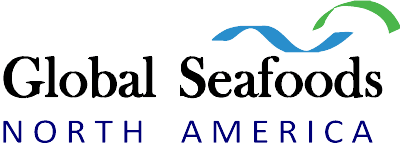Pacific Halibut Farming vs. Atlantic Salmon Farming: Which is More Sustainable?
As the demand for seafood continues to grow, aquaculture (fish farming) plays an essential role in supplying fresh fish while reducing pressure on wild stocks. Two commonly farmed species—Pacific Halibut and Atlantic Salmon—offer unique benefits and challenges.
In this article, we'll explore Pacific Halibut farming vs. Atlantic Salmon farming, comparing sustainability, environmental impact, health benefits, and consumer preferences.
What is Pacific Halibut Farming?
Pacific Halibut farming involves raising halibut in controlled environments, such as offshore pens or land-based tanks. This method provides a stable supply while reducing reliance on wild fisheries.
✅ Benefits of Pacific Halibut Farming
- Sustainable Supply – Reduces overfishing pressure on wild populations.
- High-Quality Protein – Halibut is a nutrient-dense fish, rich in protein and omega-3s.
- Economic Growth – Supports local fisheries and job creation in coastal communities.
⚠️ Challenges of Farming Halibut
- Slow Growth Rate – Takes 3-5 years to reach market size, making farming costly.
- Space & Feed Requirements – Needs large enclosures and high-protein feed, increasing costs.
- Disease & Waste Management – Farms must carefully monitor water quality to prevent contamination.
For wild-caught Pacific Halibut, check out:
🔹 Pacific Halibut Fillet
🔹 Fresh Pacific Halibut
What is Atlantic Salmon Farming?
Atlantic Salmon farming is one of the largest aquaculture industries, with farms in Norway, Chile, Canada, and Scotland. Salmon is fast-growing and high in omega-3 fatty acids, making it a popular choice worldwide.
✅ Benefits of Atlantic Salmon Farming
- Rapid Growth – Salmon reaches market size in 18-24 months (faster than halibut).
- Cost-Effective Production – Farming techniques optimize efficiency.
- High Demand – A staple in seafood markets, sushi restaurants, and grocery stores.
⚠️ Challenges of Farming Salmon
- Environmental Concerns – Waste pollution, habitat damage, and antibiotic use impact marine ecosystems.
- Disease & Parasites – Sea lice infestations can spread to wild fish.
- Escaped Fish Risks – Farmed salmon interbreeding with wild populations weakens genetic diversity.
For sustainably sourced halibut, explore:
🔹 Halibut Steaks
🔹 Halibut Cheeks
Environmental Impact: Halibut vs. Salmon Farming
| Factor | Pacific Halibut Farming | Atlantic Salmon Farming |
|---|---|---|
| Growth Time | 3-5 years (slow) | 18-24 months (fast) |
| Waste Pollution | Moderate impact | High due to fish waste |
| Disease Risk | Low | High (prone to parasites & infections) |
| Feed Conversion | Requires fish-based feed | High fishmeal use (affects marine life) |
| Escape Risk | Low | High, can harm wild salmon populations |
| Sustainability | More sustainable | Overfishing of smaller fish for feed |
For wild halibut with minimal environmental impact, visit:
🔹 Flatfish Collection
Health Benefits: Halibut vs. Salmon
Both Pacific Halibut and Atlantic Salmon are rich in nutrients, making them excellent additions to a balanced diet.
✅ Nutritional Comparison
| Nutrient | Pacific Halibut (100g) | Atlantic Salmon (100g) |
|---|---|---|
| Calories | 105 | 206 |
| Protein | 22g | 20g |
| Fat | 2g | 13g |
| Omega-3s | 500-1000 mg | 2000 mg+ |
| Vitamin D | High | Very High |
| Selenium | High | Moderate |
🔹 Halibut is leaner, making it ideal for low-fat, high-protein diets.
🔹 Salmon has more omega-3s, which benefit heart and brain health.
For healthy, lean halibut, check out:
🔹 Buy Halibut Online
Sustainability & Regulations
Sustainable aquaculture minimizes environmental impact while ensuring fish populations remain stable. Pacific Halibut fisheries follow strict guidelines to maintain sustainability.
🌍 How Sustainable Are These Fish?
- Wild-Caught Pacific Halibut – Regulated by the International Pacific Halibut Commission (IPHC) to prevent overfishing.
- Farmed Atlantic Salmon – Often criticized for habitat destruction, overuse of antibiotics, and chemical pollution.
- Halibut Farming – Still developing, but promising for sustainable growth with responsible practices.
For sustainably sourced Pacific Halibut, visit:
🔹 Pacific Halibut Fillet
FAQs: Halibut vs. Salmon Farming
1. Which is more sustainable: Halibut or Salmon farming?
Pacific Halibut farming is generally more sustainable due to lower disease risks and less environmental pollution.
2. Which is healthier: Halibut or Salmon?
Both are healthy! Halibut is leaner and high in selenium, while salmon is higher in omega-3 fatty acids.
3. Why is farmed salmon controversial?
Farmed salmon is often criticized for pollution, disease outbreaks, and overuse of fishmeal.
4. Can I eat wild-caught Pacific Halibut instead of farmed fish?
Yes! Wild-caught halibut is a more sustainable choice with lower environmental impact.
5. Where can I buy high-quality Halibut?
For premium wild Pacific Halibut, visit:
🔹 Fresh Pacific Halibut
Final Verdict: Which Should You Choose?
If you care about sustainability, health benefits, and flavor, wild-caught Pacific Halibut is the superior choice.
✅ Why Choose Wild-Caught Halibut?
✔ Lower environmental impact than farmed salmon
✔ Lean, high-protein seafood with essential nutrients
✔ No antibiotics or artificial feeds
✔ Supports sustainable fisheries
For top-quality Halibut, shop at Global Seafoods today!
Watch More on Sustainable Seafood! 🎥
By choosing wild-caught Pacific Halibut, you support sustainable seafood practices while enjoying one of the healthiest fish available. 🌊🐟




